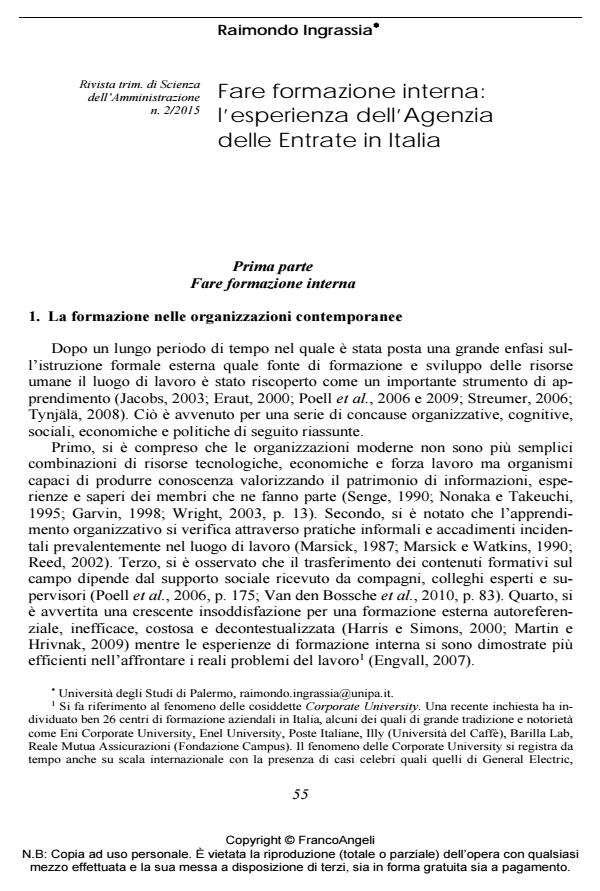Doing internal training: the Italian Revenue Agency experience
Journal title RIVISTA TRIMESTRALE DI SCIENZA DELL’AMMINISTRAZIONE
Author/s Raimondo Ingrassia
Publishing Year 2015 Issue 2015/2
Language Italian Pages 28 P. 55-82 File size 144 KB
DOI 10.3280/SA2015-002004
DOI is like a bar code for intellectual property: to have more infomation
click here
Below, you can see the article first page
If you want to buy this article in PDF format, you can do it, following the instructions to buy download credits

FrancoAngeli is member of Publishers International Linking Association, Inc (PILA), a not-for-profit association which run the CrossRef service enabling links to and from online scholarly content.
This study aims a dual purpose: to delineate the framework of the key-factors that induces the organizations to realize internal training processes and verify its validity on the field. Therefore this article is divided into two parts. In the first six key-factors inducing to internal training are identified: workplace specificity, interactions, relationships and communication for learning objectives, person-centered learning, adult education, organizational strategies implementation, costs-benefits analysis of training. Then a working model for internal training is explained. In the second part the field study of internal training system of the Italian Revenue Agency is showed. The study confirms the assumptions of the first part with the exception of the factor "workplace specificity" that has some ambivalence.
Keywords: Internal training, key-factor, Italian Revenue Agency
Raimondo Ingrassia, Fare formazione interna: l’esperienza dell’Agenzia delle Entrate in Italia in "RIVISTA TRIMESTRALE DI SCIENZA DELL’AMMINISTRAZIONE" 2/2015, pp 55-82, DOI: 10.3280/SA2015-002004